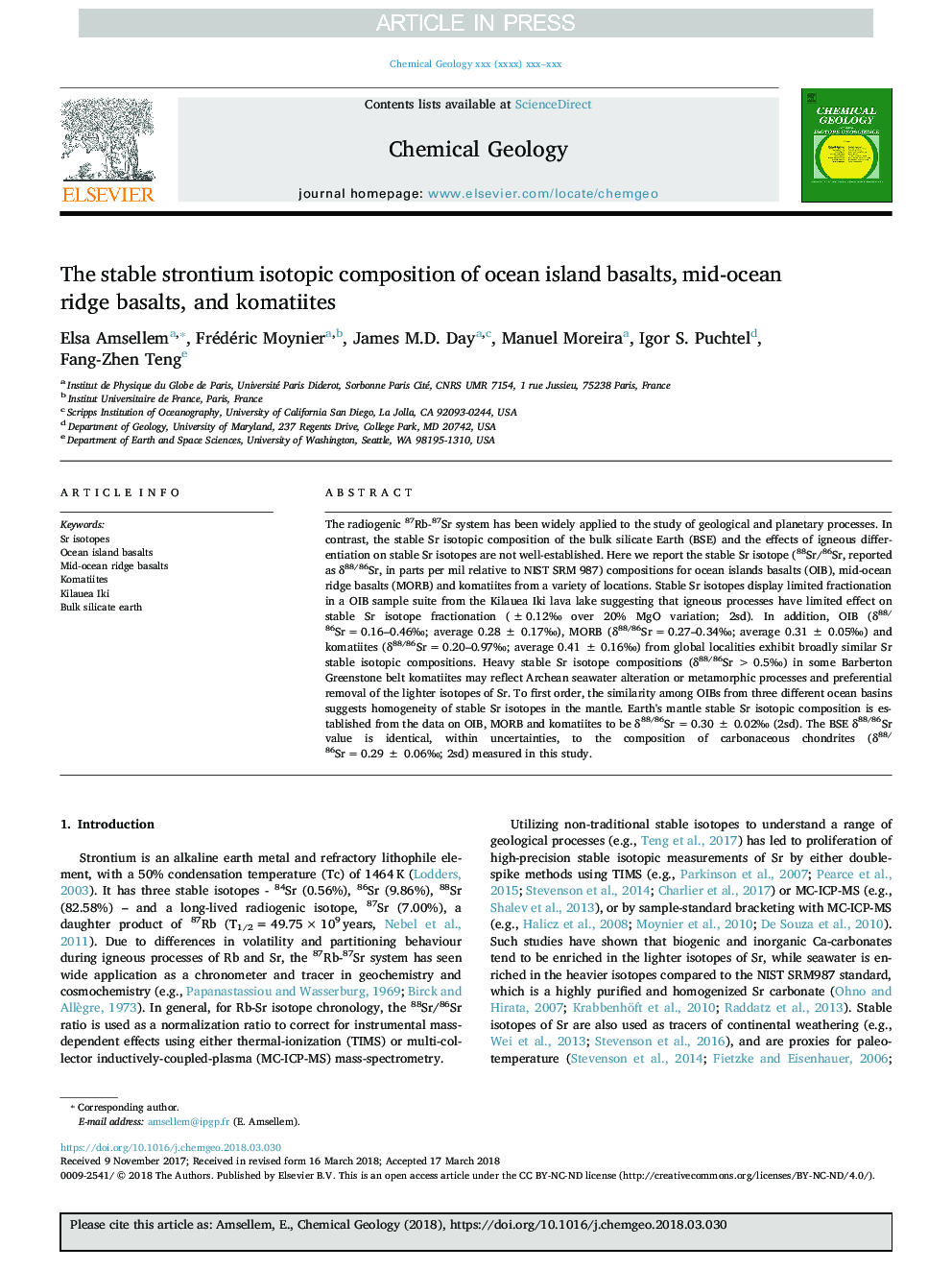| Article ID | Journal | Published Year | Pages | File Type |
|---|---|---|---|---|
| 8910316 | Chemical Geology | 2018 | 8 Pages |
Abstract
The radiogenic 87Rb-87Sr system has been widely applied to the study of geological and planetary processes. In contrast, the stable Sr isotopic composition of the bulk silicate Earth (BSE) and the effects of igneous differentiation on stable Sr isotopes are not well-established. Here we report the stable Sr isotope (88Sr/86Sr, reported as δ88/86Sr, in parts per mil relative to NIST SRM 987) compositions for ocean islands basalts (OIB), mid-ocean ridge basalts (MORB) and komatiites from a variety of locations. Stable Sr isotopes display limited fractionation in a OIB sample suite from the Kilauea Iki lava lake suggesting that igneous processes have limited effect on stable Sr isotope fractionation (±0.12â° over 20% MgO variation; 2sd). In addition, OIB (δ88/86Srâ¯=â¯0.16-0.46â°; average 0.28â¯Â±â¯0.17â°), MORB (δ88/86Srâ¯=â¯0.27-0.34â°; average 0.31â¯Â±â¯0.05â°) and komatiites (δ88/86Srâ¯=â¯0.20-0.97â°; average 0.41â¯Â±â¯0.16â°) from global localities exhibit broadly similar Sr stable isotopic compositions. Heavy stable Sr isotope compositions (δ88/86Srâ¯>â¯0.5â°) in some Barberton Greenstone belt komatiites may reflect Archean seawater alteration or metamorphic processes and preferential removal of the lighter isotopes of Sr. To first order, the similarity among OIBs from three different ocean basins suggests homogeneity of stable Sr isotopes in the mantle. Earth's mantle stable Sr isotopic composition is established from the data on OIB, MORB and komatiites to be δ88/86Srâ¯=â¯0.30â¯Â±â¯0.02â° (2sd). The BSE δ88/86Sr value is identical, within uncertainties, to the composition of carbonaceous chondrites (δ88/86Srâ¯=â¯0.29â¯Â±â¯0.06â°; 2sd) measured in this study.
Keywords
Related Topics
Physical Sciences and Engineering
Earth and Planetary Sciences
Geochemistry and Petrology
Authors
Elsa Amsellem, Frédéric Moynier, James M.D. Day, Manuel Moreira, Igor S. Puchtel, Fang-Zhen Teng,
